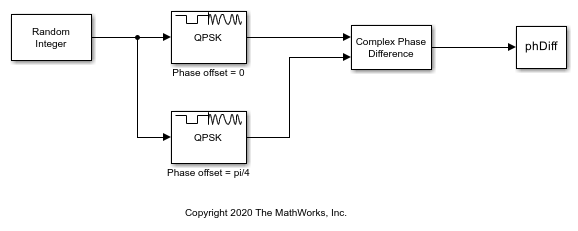Complex Phase Difference
Phase difference between two complex signals
Libraries:
Communications Toolbox /
Utility Blocks
Description
The Complex Phase Difference block computes the phase difference in radians between the second input signal and the first input signal. The elements of the output are between -π and π. This block independently processes each pair of corresponding elements.
Examples
Ports
Input
Output
Block Characteristics
Data Types |
|
Multidimensional Signals |
|
Variable-Size Signals |
|
Extended Capabilities
Version History
Introduced before R2006a


